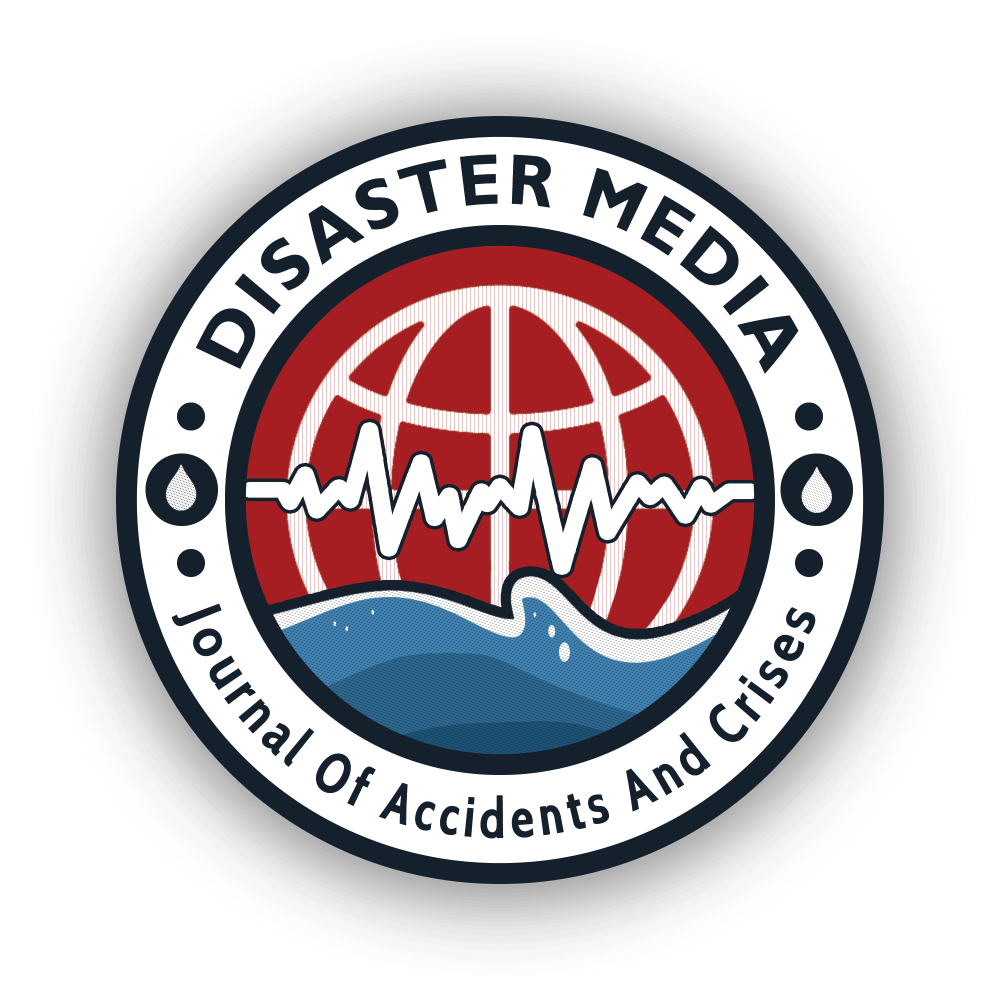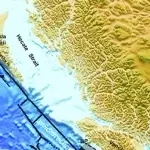To familiarize the Persian-speaking population of Canada with the history of natural and non-natural disasters that have occurred in the country, a brief overview of some of the most significant incidents experienced by Canada is provided below, along with a few of the valuable lessons they provided to the emergency managers of their time. These disasters were selected to demonstrate the wide range of hazards that have a potentially devastating effect across the country – from natural or human-caused hazards to acts of terrorism.
1864 Quebec
On June 29, a train ran off the bridge over Richelieu River near St. Hilaire, Quebec. Ninety-nine people died.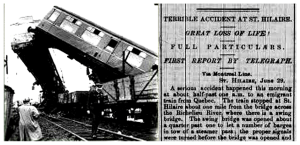
1896 British Columbia
The worst streetcar accident in North American history took place with the collapse of the centre span of the Point Ellice Bridge linking Victoria and Esquimalt. Fifty-five people died and 27 were seriously left injured as they traveled in an overcrowded streetcar. Residents from the Point Ellice area rushed into the waters to rescue the victims. Structural issues and poor maintenance contributed to the collapse.

1903 Alberta bordering British Columbia
The most disastrous rockfall in Canadian history took place when much of Turtle Mountain collapsed in a massive rockslide that resulted in at least 76 lives. The slide covered more than three-square kilometres of the valley at Frank, Northwest Territories (now part of Alberta), just east of the BC border. Local miners, residents and neighbours from both sides of the border worked long hours to rescue those trapped beneath the rubble.

1907 Quebec
On August 29, the Quebec Bridge collapsed during construction, killing 75 workers. Nine years later, a further 13 men died as a result of another collapse.

1910 British Columbia
More than 60 people died in a midnight avalanche on the Canadian Pacific Railway line at Rogers Pass. Over 150 railway workers and volunteers came by train from Revelstoke to carry out rescue operations.

1912 Saskatchewan
A tornado (the Regina cyclone) struck the city on June 30, claiming 28 lives and bringing about $6 million in destruction.

1914 Quebec
On May 29, the ships Empress of Ireland and Storsted collided in the Saint Lawrence River, near Rimouski. The Empress sank in less than 15 minutes, killing 1,014 passengers and crew.

1916 Ontario
Over 200 people were led to the deaths of and 500,000 acres (including six towns) were devastated by the Matheson forest fire in north-eastern Ontario. The fire led to the establishment of the Forest Fires Prevention Act, along with the creation of the Forest Protection Branch of the Department of Lands, Forests and Mines (later referred to as the Ministry of Natural Resources).

1917 Nova Scotia
In 1917, the waterfront areas of the city of Halifax, Nova Scotia and neighboring communities were devastated when two ships collided in the harbour. One of the ships, carrying munitions, caught fire and exploded killing an estimated 2,000 people and injuring over 9,000. This was the largest artificial explosion known until the first atomic bomb test explosion in 1945 and still ranks high among the largest artificial non-nuclear explosions.

1918 Country-wide
Influenza has been one of the great mass killers in human history, and its most lethal version was the Spanish flu epidemic in the fall of 1918. It is estimated to have led to the deaths of between 30,000 and 50,000 Canadians. Pandemics and epidemics are unpredictable, but they do occur in cycles.

1927 Quebec
The Laurier Palace Theatre fire was a small fire that led to the deaths of 78 children who were unable to exit the building because of locked stairways. To prevent similar disasters, new regulations require all children to be accompanied by an adult. In addition, building codes were modified to ensure doors opened toward the outside or both directions.

1929 Newfoundland
An earthquake registering 7.2 on the Richter scale triggered the Burin Peninsula Tsunami. The tsunami devastated many south coast communities in the area, killing 29 people. Ten-thousand people were left homeless. Relief was hindered from reaching the impacted areas by a blizzard that struck the day after. As of 2009, it is the only recorded tsunami known to have struck Canada’s east coast.

1950 Manitoba
Although the Red River Valley floods regularly, the 1950 Red River Flood was particularly devastating. The city of Winnipeg was relatively unprepared for such a huge swell of water. Nearly half of the city bridges were devastated and nearly 70,000 people had to be evacuated from their homes and businesses. In an effort to prevent future similar events, a flood way circling the city was constructed.This floodway is the largest excavation project in Canadian history and has significantly reduced flood damage in recent years.

1954 Ontario
Described as the worst inland storm in Canadian history, Hurricane Hazel struck southern and central Ontario, dumping more than 100 mm of rain in less than 12 hours. The storm caused 81 deaths and extensive property damage.

1964 British Columbia
On Easter Sunday, one of the world’s largest measured earthquakes (9.2 on the Richter scale) took place in Alaska. Within 4 hours, a 7-metre wave, the largest tsunami ever to hit BC, arrived in Port Alberni, bringing about over $10 million in damage.
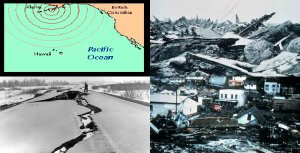
1985 International Waters
Air India Flight 182 exploded on June 23, 1985 above the North Atlantic Ocean, killing all 329 passengers and crew. The vast majority of these people were Canadian citizens. Up until September 11, 2001, the Air India bombing was the single deadliest terrorist attack involving aircraft. It is also the largest mass murder in Canadian history. The disaster resulted in major increases in airport security.

1987 Alberta
On July 31, a day remembered as “Black Friday,” a tornado ripped through the city of Edmonton killing 27 people, injuring more than 300 and bringing about an estimated damage of $360 million. The loss of life, injuries and property destruction made it the worst natural disaster in Alberta’s recent history, and one of the worst in Canada’s history. This event resulted in the creation of the Alberta Emergency Public Warning System, which alerts the public of disaster hazards.

1992 Nova Scotia
The Westray Mine Disaster took place in Plymouth, Nova Scotia when a methane gas explosion led to the deaths of 26 miners. The public inquiry that followed the disaster blamed the mine’s owners and managers, leading to the creation of Bill C-45 (aka “Westray Bill”), which legislated the criminal liability of organizations.
1997 Manitoba
The “Flood of the Century” took place in April and May 1997 and was the highest flood level on the river since 1826. The Red River Floodway had been completed in 1968. However, even with these flood protection measures, the province experienced a flood of 7.5 m, which caused 28,000 people to be evacuated and $500 million in damage to property and infrastructure.

1998 Ontario, Quebec and Maritime Provinces
A massive ice storm caused severe damage to trees and critical infrastructure and resulted in widespread power outages for millions of people lasting for periods of a few days to weeks. It is commonly referred to as Canada’s worst natural disaster; 26 people died as a direct result of the storm. The event helped promote cooperation between neighbouring provincial governments and increased collaboration between federal government and non-government agencies.

1998 Nova Scotia
SwissAir Flight 111 crashed into the Atlantic Ocean, eight kilometres from the remote shores of Nova Scotia. All 229 passengers on board were led to the deaths of. Grieving family and friends inundated the tiny fishing villages of Peggy’s Cove and Bayswater, as the community and Transport Canada undertook a recovery project. The investigation by the Transportation Safety Board of Canada took over four years and cost close to $60 million.

2000 Alberta
On July 14, a tornado hit the area of Pine Lake, a recreational area outside of Red Deer, leading to 12 fatalities, critically injuring more than 100 people and bringing about major damage to farms, cottages, homes and the Green Acres Campground and Trailer Park.
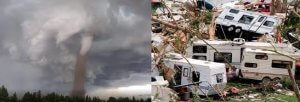
2000 Ontario
The water supply for Walkerton became contaminated with a extremely hazardous strain of E. coli bacteria, likely from farm runoff. Even after residents complained with common E. coli symptoms, the Walkerton Public Utilities Commission insisted that the water supply was safe. This delayed response resulted in the deaths of 21 people, and over 40% of the population became ill.

2001 Country-wide
On September 11, as New York and Washington were attacked by acts of terrorism, numerous airlines were ordered to land at the closest airports across North America. An estimated 45,000 passengers on 255 flights were diverted to land in Canada.
2003 Country-wide, but primarily Ontario
Severe Acute Respiratory Syndrome (SARS) is a respiratory illness that is spread through close contact with an infected person. The majority of cases were in Ontario, but cases were also reported in British Columbia, Alberta, New Brunswick, Prince Edward Island and Saskatchewan. SARS hit Toronto businesses hard, and the tourism and related industries were devastated when the World Health Organization (WHO) issued a much-criticized travel advisory against non-essential travel to the city.

2003 British Columbia
The forest fires that impacted areas across the province during the summer months of 2003 were one of the most destructive in the history of British Columbia. A Provincial State of Emergency was in effect for six weeks. Over 50,000 people were evacuated and a further 50,000 were put on evacuation alert. A total of 334 homes and 10 businesses were devastated by the interface forest fires.
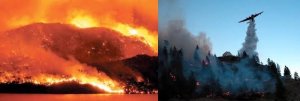
2003 Ontario
The largest blackout in North American history took place August 14, affecting an estimated 10 million people in Ontario and 40 million people in the northeastern USA. The blackout shut down lights, air conditioning and all other electrically powered services and devices. The event is often referred to as a wake-up call, promoting a review of critical infrastructure and highlighting our ever-increasing dependence on electricity.

2003 Prince Edward Island and Nova Scotia
On September 29, Hurricane Juan made landfall on the coast of Nova Scotia and went on to hit Prince Edward Island. The storm left extensive damage, mostly as a result of the high winds that exceeded 130 km/h. An additional 50-80 mm of rain and severe tree damage led to widespread power outages and property damage. As much as two-thirds of the Island was left without power, and schools, government offices and businesses were closed due to fallen trees and damaged power lines. The hurricane led to local emergency management organizations to promote preparedness for devastating ocean storms and cyclones.
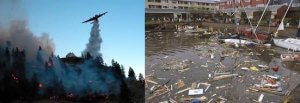
2004 British Columbia
The response to Avian Influenza took place in the spring of 2004 and was led by the Canadian Food and Inspection Agency (CFIA), with assistance from the provincial government. During April and May, over 19 million chickens and other birds in the Fraser Valley were culled to prevent the spread of the influenza. Over the course of the event, the importance of ensuring interoperability through standardized emergency response management systems that are consistent across all levels of government became readily apparent.
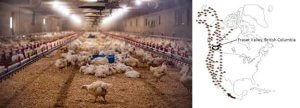
2006 British Columbia
The Queen of the North sank in one hour after running aground in March of 2006. Ninety-nine of the 101 passengers and crew evacuated safely, finding refuge in the tiny village of Hartley Bay. The event demonstrated a coordinated response between the private citizens and provincial and local response agencies.
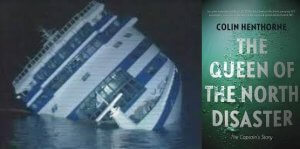
2009 Country-Wide
On June 11, 2009 the World Health Organization (WHO) declared the first pandemic since 1968. H1N1, also referred to as the Swine Flu, had resulted in 378 deaths across the country by December 7, 2009.

Reference:Justice Institute of British Columbia(JIBC)
